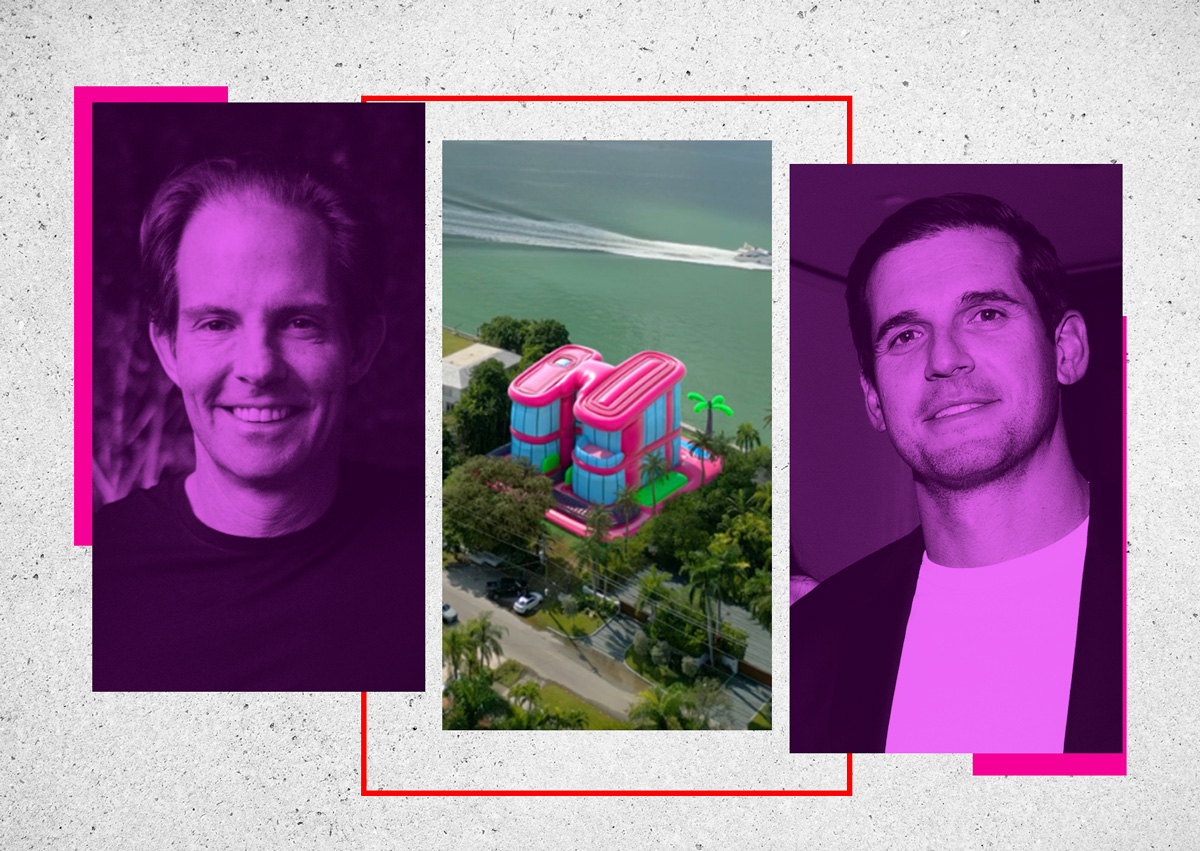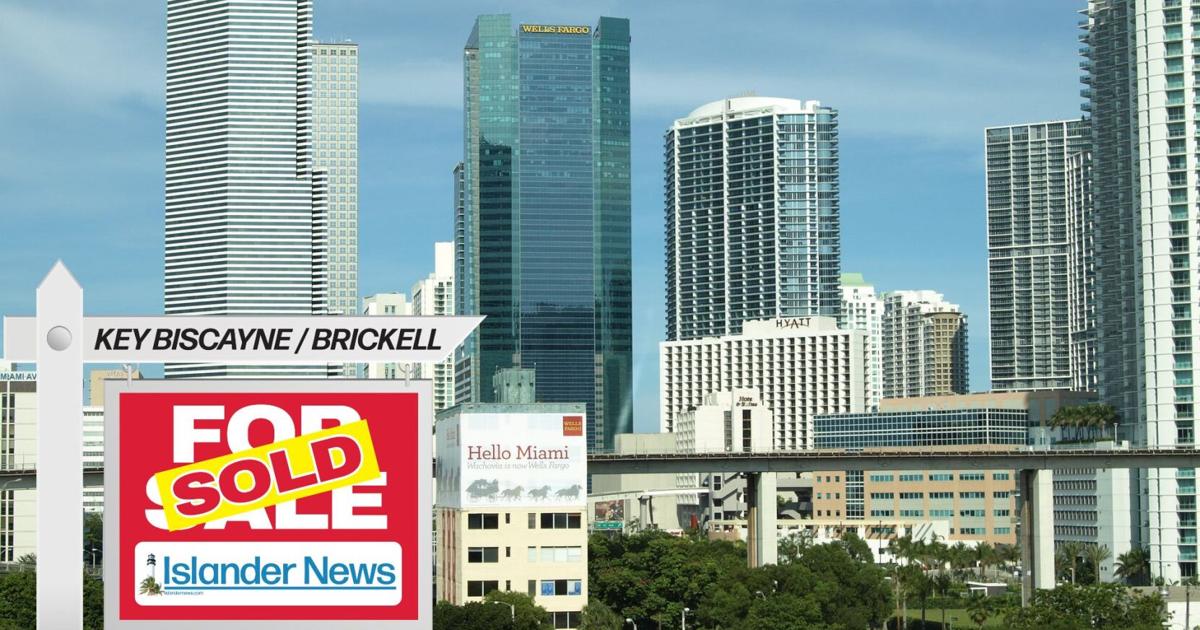University of Miami, Miami Beach struggle hunting pollution source
Advertisement

Ultra-high pollution in Parkview Island Canal, “a canal within a canal, within a bay,” is associated with freshwater that floats on the surface, entering during storms through the area’s stormwater system and containing animal and human feces, a University of Miami study has found.
Enterococci – the bacteria found in the samples carrying concentrations of human and animal fecal waste – was said to come from a combination of “a whole ecosystem of animals,” human waste, and leaking garbage bins.
Residents along the Parkview Island Canal, however, pushed back during the report’s unveiling and community workshop Jan. 24 at the North Shore Park and Youth Center, which city staff and 50 to 60 residents attended. They argued that it just cannot be animal waste alone contaminating the canal and urged the city to look at sanitary sewer leakages.
The City of Miami Beach hosted the meeting to present the findings of the University of Miami’s team of environmental engineers, headed by Dr. Helena Solo-Gabriele from the College of Engineering, on the water quality assessment of the canal that’s has been contaminated with fecal waste and bacteria.
The study did not discount that the contamination might be linked to sanitary sewage leakage, but the UM experts in charge didn’t find evidence of a direct connection and recommended that the city investigate underground for potential sanitary sewage system leakage.
The city since 2020 has been running tests on the canal, which include dye testing, underground camera inspections of the sanitary sewerage, manhole inspections and smoke testing, said Cristina Ortega, city engineer of the Public Works Department.
Other sanitation enhancements included rain domes on the public trash bins to minimize leakage; increased frequency of hand crew cleanings, from once a week to twice a week; cleaning of debris from sidewalks, gutters, and the right of way; and increased cleaning of public litter cans from once a week to twice a week.
The study, approved last June, cost the city $122,000, according to city documents. It continued previous city-conducted studies, combining data from April 2019 to October 2022. Prior monitoring revealed elevated levels of fecal indicator bacteria said to come mostly from dogs, but waste from birds, iguanas, rats and feral cats was also found, said Amy Knowles, chief resilience officer and director of environment and sustainability.
The findings of the water quality assessment are to be taken to the city administration and presented to the city commission to seek action implementation funding.
“We’re here to focus on the solutions,” said Ms. Knowles. “We needed experts beyond what the city can do. This is a very complex water quality problem and it’s been going on for quite some time.”
Dr. Solo-Gabriele teaches courses in water quality, environment, and microbiology engineering. Her research has focused on evaluating the relationship between the environment and human health. She has also evaluated causes of microbial pollution in zones throughout the state, with targeted studies in Monroe, Miami-Dade, Broward, and St. Lucie counties.
Contrasted to the ocean side of Miami Beach, the bay side tends to have higher levels of bacteria because water is not moving as much, Dr. Solo-Gabriele said. “It’s a canal within a canal, within a bay. It is a very vulnerable area to accumulation of bacteria.”
But the levels recorded at Parkview Island Canal far exceed bacteria levels found elsewhere in the county. The basis of comparison chosen to study bacteria levels is most probably number (MPN) per 100 milliliters. In this case, it was 70 MPN per 100 milliliters, because that is the level that the Florida Department of Health uses to identify whether a beach should be open or closed.
The study showed that from April 2019 to October 2022, there were only four instances where enterococci concentrations were under 70 MPN per 100 milliliters in samples taken once a month. The highest detection of concentrations was at above 24,196 MPN. In four instances, concentrations were above 10,000 MPN.
Throughout 2021, there were exceedances every single month, Dr. Solo-Gabriele said.
A sewage spill at Harding Avenue and 72nd Street in March 2020 dropped nearly 1.4 million gallons of raw sewage into Biscayne Bay. That month, enterococci levels were 142 MPN, but the month after levels jumped to 13,000.
“The City of Miami Beach has done a lot of studies with water quality over a four-year period, not only looking at the bacteria but also looking at water quality parameters,” said Dr. Solo-Gabriele. “The city has also conducted a lot of work looking at the sewer system, trying to identify potential leakages in the sewer system.
As a result, we were provided with a very rich record that we could look at.”
The study performed a sampling program testing various areas of the canal, different times of day, of the depth of the water, on high tide and low tide, and sampling of the stormwater system and the shoreline sediments.
Historical records also showed that rain (freshwater, which is buoyant) elevated enterococci levels, and that salinity (oceanwater, which is dense) lowered the levels. The UM study also confirmed those findings.
“The rainwater… washes the streets, and all of that water then goes through the command system, and then, potentially into the canal,” she said. “So, it makes sense that it’s the stormwater conveying system bringing freshwater into the conveyances.”
The total catchment area that discharges stormwater to the Parkview Island Canal is about 81 acres, she said. It extends from the west side of Parkview Island to the east side at Collins Avenue, going North from 77th Street and down to 72nd. “Anything that is deposited on the streets in those 81 acres is going to be carried by the rain towards the sanitary sewer and impact that small canal. We’re trying to force this large area of rainwater down with very little circulation. There’s a tendency for the bacteria that is washed off the streets to accumulate within the canal.”
The level of the tide impacts bacteria on the canal as well. “At low tide, what happens is the groundwater is higher, water goes downhill to the canal,” she said. “At high tide, the water from the canal is pushing back into the ground.”
Dr. Solo-Gabriele also said there is a possibility that the sanitary sewer system could be linked to the problem. “That’s something we cannot discount,” she said but did not confirm either.
During the evaluation of the stormwater conveyance system, at the east side of Parkview Island MPN levels went up to 1,000s, 2,000s, and 4,600s. The hot spots were at the stormwater outfalls, as the canal was pushing water back at high tide.
A substantial hot spot was observed between 73rd Street and A1A (All-American Road) with about 100,000 MPN. Dr. Solo-Gabriele pointed out that there is sanitary sewer infrastructure in the area. Nonetheless, other hot spots were not necessarily closed to sanitary infrastructure.
The team also spotted elevated levels of bacteria in the sediment along the shoreline. The top sediment on the streets had accumulated bacteria from leaking trash bins, and the bottom sediment, from inside the stormwater inlets, was possibly from trash stuck inside, Dr. Solo-Gabriele said. “The sediments that are on the streets at Collins Avenue and 72nd have really high levels of bacteria.”
From what is visible, she said, the team found feces from dogs, feral animals, such as cats, rats and iguanas – “a whole ecosystem of animals that are potentially contributing towards the fecal material.”
There was also a site in the Parkview Island Park that had an animal feeding station, but the city has already taken that down. Another issue contributing to the contamination deals with the presence of a homeless population. Lindsey Precht, assistant director of Environment and Sustainability, said the city is actively working on an outreach program to help people living in homelessness in that area.
On Jan. 19, residents from Parkview Island documented a blockage in the sewers of Bruce Street and Wayne Avenue, and Raymond Street and Gary Avenue. “The wastewater came up and then was crossing over into the storm sewer system,” said Dr. Solo-Gabriele.
She reiterated that this canal within a canal within a bay accumulates water that does not have much movement. “We’re asking this canal to assimilate a huge amount of water wash-off from the streets, and it’s going to take a lot of engineering in order to make sure that the waterway is able to maintain healthy with lower levels of bacteria. That’s going to require a considerable investment in stormwater, and sanitary infrastructure.”
Recommendations included treatment of stormwater, or use of sediment separators and additional disinfection; the integration of systems for trash capture and a sediment removal system; frequent inspection of manholes for potential back-ups; the installation of smart technology manholes that issue alerts when back-ups occur; major investments to upgrade sanitary sewer system to minimize leaks and breaks; and more trash removal and improvement of circulation through dredging.
Residents of Parkview Island canal were not happy with the conclusion that enterococci came mostly from animal waste. One said she worked with the Surfrider Foundation and studied DNA testing at the site, revealing elevated levels of human fecal matter. “And if it is the runoff from the streets and the sewage, why aren’t we seeing that in any of our other canal areas, like Little River?”
Another resident said, “I found it interesting how careful you [Dr. Solo-Gabriele] are to not establish any link to the sanitary sewage system. What do you have to do – or any other person – in order to establish or rule out a link?”
Said Dr. Solo-Gabriele, “that’s the million-dollar question. It’s very hard to prove a negative.”
Another resident said as a realtor who has dealt with home inspections, “I can tell you that each and every one of the properties (in the area) that were built before the ’70s is dealing with some sort of leakage into the ground. Maybe that’s what you guys are finding.”
But to these questions, the city and Dr. Solo-Gabriele stood behind the assessment that has been done. The city has planned for the short-term to coordinating with the county’s Department of Environmental Resources Management for the installation of sanitary sewer manhole smart covers, gravity sewer trenchless rehabilitation at Parkview Island – about 90% of pipes and 30% of manholes – other sanitary sewer maintenance and replacements, and additional dye testing of sanitary sewer pressure pipes.
“We also have a project for the replacement of about 250 linear feet of pipe that is very old,” said Ms. Ortega.
Within one to three years, the city department is to work on a budget request to design and construct water quality systems for existing major stormwater outfalls. In the long term, the city has applied for multiple grants, including one for shoreline improvements at the Parkview Island Park area, plus an executed $10 million grant agreement for the design of North Shore Drive improvements that include new stormwater conveyance, new water quality treatment – including trash racks, a vortex separator and injection wells – and new pump station and outfall.
“Our public works crews do work very hard at cleaning our stormwater systems. We do collect over 300 tons of debris annually,” Ms. Orterga said. “The cleaning that is done exceeds five times what the regulators require [of] us. This area in particular has been identified as a high-impact area, so we’ll take that into consideration.”


